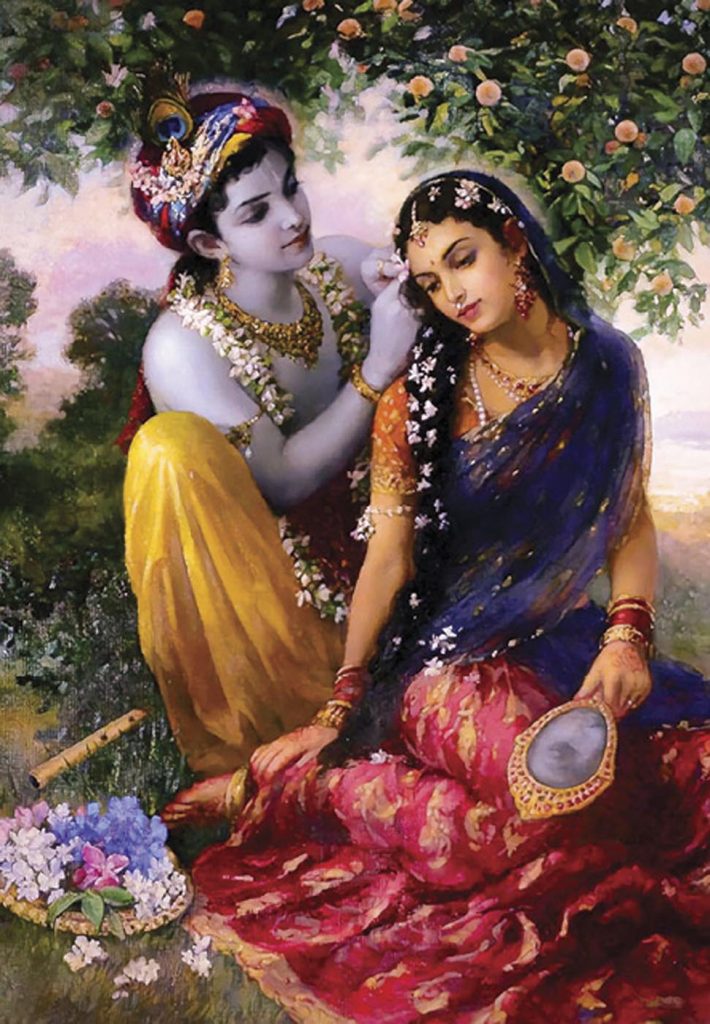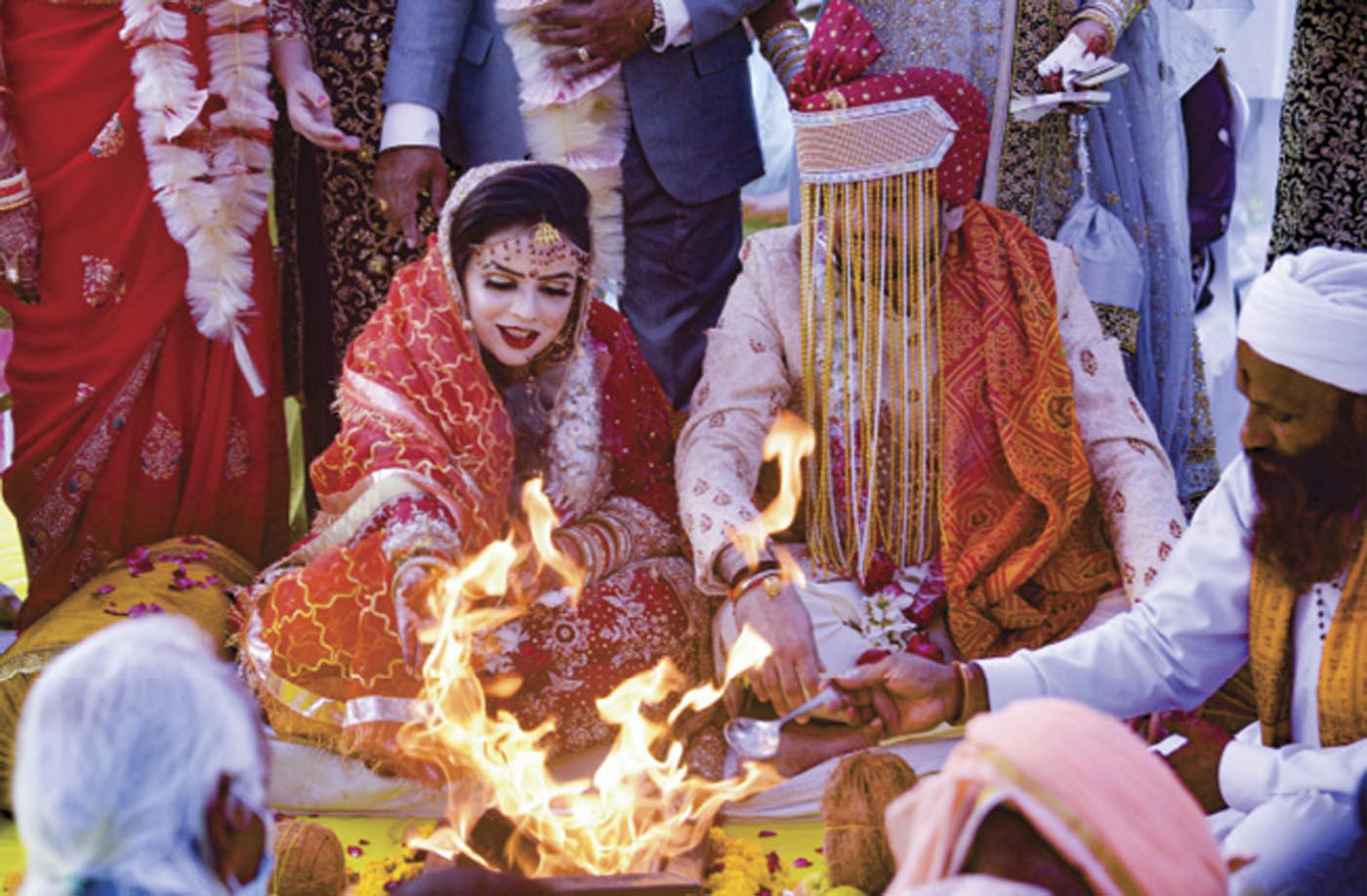Arranged? Assisted? Love? Marriages are coming in many forms these days, each with its own challenges and rewards
By Rutvij Holay
As far back as I can trace my ancestry, everyone in my family, up till my own parents, has had an arranged marriage. Now, however, I am seeing my cousins having Western-style love marriages in ever-increasing numbers. This is not in my family alone—many school-age Hindus nowadays have boyfriends or girlfriends, and almost everyone has a crush of some sort.
Of course, none of this is happening without backlash from the older generation. Parents, grandparents, and even some sons and daughters fear that due to the increase in casual dating—often with no intention of forming a long-term relationship—arranged marriages, a key part of our culture, are gradually disappearing.
Arranged marriages aren’t necessarily a bad custom. In a culture where the word for divorce is nonexistent at best and a made-up or foreign loanword at worst, divorces are now on the rise. At the same time, however, many youth argue back that love marriages have always been a part of our culture, citing the popular love tale of Radha and Krishna as an example.
There are two questions we must answer. One, are love marriages good for society? Two, what is the future of marriage among Hindu youth? Especially outside of India, such as in the United States, it is crucial that we answer the latter question.


To find the answer, we will start with the eight types of marriages in Vedic India. These can be classified broadly into three types: arranged marriages, crimes and gandharva vivaha. Arranged marriages can broadly be classified as “good” (though this was never unanimously agreed upon), with the best of those being known as Brahma vivaha, meaning literally, “divine marriage.” In a Brahma vivaha, which may be done by any varna, consent is needed from both families, including the boy and girl, before proceeding. More notably, it doesn’t matter who finds the spouse, even if the couple does it themselves. As long as the families are actively and approvingly involved in the process, the marriage may be considered Brahma vivaha.
As for the other marriages, crimes include those that were completed without the consent of the couple in some way, whether by selling a girl off or even by drugging her and taking her away, as in war. These were universally condemned, and it seems that they were defined mainly for legal purposes, such as prosecution, for which they are still used today in India.
Regarding gandharva vivaha, “love marriage,” opinions are split. While many authors classify it as bad, some tolerate it, with others, like Vatsyayana, going as far as calling it the ideal form. In a gandharva vivaha, no permission is needed from anyone. A couple can get married out of love simply by exchanging some garlands and saying some vows, without performing any religious rituals. In Vedic times, while not ubiquitous, these unions were common enough to merit mention. Some, such as that of Krishna with Radha, are even popularly celebrated to this day.
The marriage of Radha and Krishna ended in tragedy. Both ultimately married other people, albeit less willingly than one would after a typical breakup. Perhaps this is why this form of marriage appears to have died out in India. Though it may have been worth a try, the instability of binding a marriage with only two people gradually became apparent.
That isn’t to say that gandharva marriages never work out. After all, around 50% of all marriages in America, which predominantly practices love marriages, do not end in a divorce—coin-toss odds. However, for such a match to be maintained, a variety of factors must be considered, including balancing dharma with kama, that is, duty with pleasure. This is where many fail, precisely because they do not consider the concerns of the two families, which are a focus of arranged marriages.
Though not the most common form of marriage, it seems to me that gandharva marriages were gradually replaced by arranged marriages, especially as Hindus became more protective and restrictive of their children when faced with first Muslim and then colonialist impacts. Now, however, much to the dismay of many (including many non-Hindus), a new type of relationship is showing up worldwide which is quickly replacing even love marriages: live-in relationships. In such a relationship, a couple will move in together, even have children, without marrying. Many believe that these are gandharva vivahas. But even though neither requires societal permission, there is still a key difference between the two. When one marries in a gandharva vivaha, they must take certain vows, such as promising to stay with their partner for the rest of their life. While they can theoretically disregard these vows, there is still some societal pressure after the marriage to keep their promise. It is fairly common in India for those who have made love marriages to be forgiven by their families after some weeks and be brought back into the house as if the marriage was arranged. The intention is there to stay together for life, and thus, the couple makes an effort to set things right with their families.
In a live-in relationship, there are no such vows, or even intent. Thus, the moment things get hard, one partner can just pack up and leave, which is even worse when the couple, as many do, have kids, either from the present or a previous relationship. Without the father—as custody is usually awarded to the mother—researchers have found that students tend to not only do worse mentally, but also lack a male role model to look up to, something which is most crucial for sons. Due to this lack of commitment, many oppose live-in relationships.
The feeling around love marriages is more mixed. Some parents still fervently support the arranged marriage system. Vaishale Dedge, married herself with three kids in the Bay Area, argues that “the system isn’t as bad as it’s shown to be. My parents gave me the information about my husband and let us talk for three months before I made the ultimate decision. Even better is that, because both families are involved, we can come together to cooperate and solve issues in the marriage, rather than fighting or leaving it up to the couple. That is why the marriage system works, and that is why I want to use it for my own daughter.”
Others are more sympathetic towards love marriages. Most notable among them is Dilip Amin, who has guided over 1,200 youth through marriages. He explains, “I have seen three divorces—one lady got divorced twice—and all of them had arranged marriages. And by the way, I’m talking about the new generation, meaning all of them are in their 30s right now. So there is no way I will say that arranged marriage is perfect.”
Even among those who at least tolerate love marriages, however, there is diversity in thought as to how far outside the community their kids can marry. In India, it is quite easy to find a Hindu spouse, given that you are literally surrounded by Hindus in most parts of the country. But within Hinduism, each community has various unique traditions which families want to preserve. This does influence the thought of some parents, such as Nambi Shankaran, who has one preteen daughter in the Bay Area. She told me, “It does not matter to me whether I find a boy or my daughter does. I just want to make sure enough research is done so that the couple can main
Divorce in Hindu Tradition
By Dr Arvind Sharma
The situation regarding divorce in our tradition is, as the Americans say, “complicated.” The following points might be of help, though: Divorce as such was introduced formally through the Indian Marriage Act (1955). It was possible to have de facto “divorce” before that according to some law books (e.g. the Parasara Samhita or Naradasmriti), but it wasn’t called divorce. The problem is that marriage in Hinduism is considered a religious sacrament, as in Roman Catholicism, and not a legal contract, as in Islam. The Hindu texts just say that the wife may find another husband if the present husband is “lost,” dead, has renounced the world, is impotent or is a moral leper. Thus there was no divorce in theory—so those who say there is “no divorce in Hinduism” are almost right—but it was possible in practice according to some, but not all, sacred smrti literature. Ancient India did have divorce among those groups not governed by classical smrti law, sometimes described as lower castes.


The secular literature, as represented by the Arthasastra, provides interesting additional evidence. According to it, divorce was not possible in the first four forms of marriage (as listed in, for example, the Manusmrti) but possible by mutual consent in the case of the next three. It uses the word moksha (which usually refers to spiritual liberation) for what we call divorce now!
Today Hindi uses the word vivaha-vicheda (“marriage dissolution”) to describe it, and Marathi uses the more colorful ghatasphota (literally, “pot breaking ritual”).


